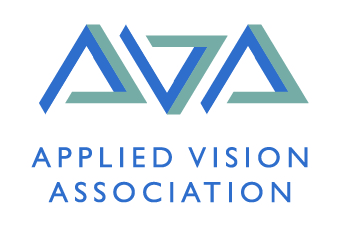

The Vision Sciences Society’s 7th annual meeting was held from 11th to 16th of May 2007, for the last time in the Florida gulf coast resort Sarasota. A total of 1600 delegates attended the meeting with over 1200 talks and posters spread over six days.
As usual, the conference kicked off on Friday with member-initiated symposia on ‘hot’ research topics in the vision sciences, this year including sessions focussing on multivariate decoding of neural representations, the use of individual differences to understand visual function, and computational approaches to natural scene understanding.
The following five days were packed with oral presentations and posters. In two concurrent streams of four talks and two poster sessions per day all areas of vision research were covered, ranging from Attention, Brightness and Colour to Visuomotor Control of Walking.
Here are a few presentations of interest, with no claim to completeness or representativeness: A great deal of scientific controversy was apparent in a session on visual crowding. Patrick Cavanagh (Harvard) and John Cass (UCL) presented evidence for two opposing theories, crowding as a result of low-level lateral interactions or higher-level attentional effects. The following discussion showed that this scientific dispute is far from being resolved. Peter Thompson (York) gave a talk on entasis, the architectural term for the slight outward curvature used in Doric columns, which allegedly compensates for a visual illusion, in which parallel lines are perceived to have a slight inward curvature. In his unique style he presented evidence that such an illusion does in fact not exist, that there is no aesthetic preference for outward curvatures, and concludes that entasis might have been used for pure engineering reasons. My own presentation (co-authored by Romi Nijhawan, University of Sussex) was a poster on localisation of moving objects, showing that observers are able to localise the offset position of abruptly disappearing moving objects accurately, whereas the instantaneous motion position is perceived displaced forward in the direction of motion. We proposed a competition process between two separate position representations, a spatially forward-shifted internal model and the bottom-up retinal transient, to account for these new and similar earlier findings in the literature. Abstracts of all presentations will be available soon in a special issue of the Journal of Vision.
Independently of the conference there was the Best Visual Illusion of the Year Contest for the third time running, which over 600 people mainly from the conference attended. Ten finalists presented their new illusions to the audience in the Van Wezel Performing Arts Hall, and the audience voted for the prize of the Best Visual Illusion.
This year’s first prize went to Frederick Kingdom (McGill) and collaborators, who presented the ‘Leaning Tower illusion’, a surprisingly simple display, which nonetheless has a striking illusionary character. Two pictures of the leaning tower of Pisa are presented side-by-side. The right of the two towers is perceived to be leaning at a much greater angle, although the two images are exactly identical. The authors explain the illusion by the fact that the visual system treats the two side-by-side pictures as if they were part of the same scene. Parallel lines in a 2D projection of the same scene would actually converge on the same point. The lines of the two identical pictures are in fact parallel, which leads the system to conclude that the towers must be leaning at different oblique angles. It is kind of surprising that this illusion has not been described earlier, as perspective has been used in art since the times of ancient Greece. All ten finalist illusions can be viewed at http://illusioncontest.neuralcorrelate.com/.
VSS 2007 was the last time the conference was held in Sarasota. Next year the meeting will move to a new venue about a hundred miles further south in Naples.
I wish to thank the Applied Vision Association for enabling me to attend the conference and present my work by awarding me with their Geoffrey J Burton travel grant.